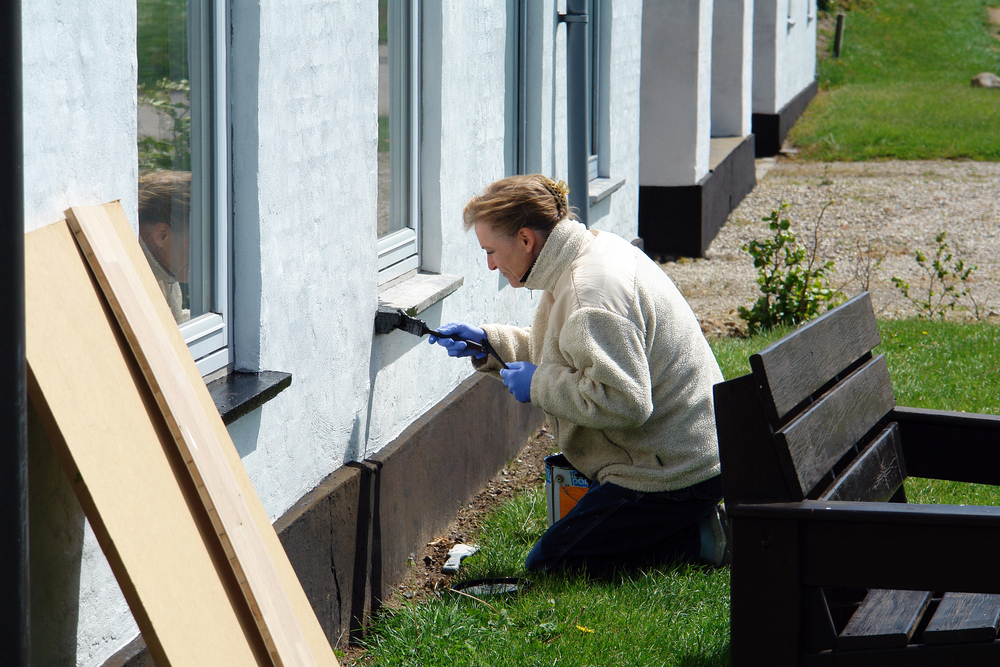Winter Paint Jobs: Do They Dry Properly?
Planning winter paint jobs? Learn how cold weather affects drying time, finish, and why hiring a professional painter is your best option.

Thinking about getting some painting done during winter? While it’s possible to tackle interior or exterior winter paint jobs, there are some important considerations to keep in mind—especially when it comes to how paint dries in colder temperatures.
Whether you're refreshing your walls or giving your home’s exterior a new look, knowing how winter conditions affect paint can help you decide the best time to hire a painter. Here’s what you need to know.
Cold Weather Slows Drying Time
One of the biggest challenges with winter paint jobs is slower drying. Most paint products are designed to cure and dry in optimal conditions—typically between 10°C and 30°C. When the temperature drops below that range, paint doesn't dry as quickly or evenly.
For water-based (latex) paints in particular, the drying process can be significantly affected by both temperature and humidity. Oil-based paints also take longer to cure, and may become tacky or not set properly if exposed to moisture or cold.
If you’re working with a professional painter, they’ll understand the product specs and local conditions well enough to avoid issues with drying and adhesion.
Surface Temperature Matters More Than You Think
It’s not just the air temperature that matters—surface temperature plays a major role in paint performance. A surface that feels cold to the touch (below 10°C) can prevent paint from bonding properly, even if the forecast looks sunny.
For exterior walls, roofs, or trims, painters usually check the surface temperature directly before starting any work. This ensures that the paint can adhere and dry as expected.
If you’re located in colder regions like Canberra, Hobart, or the Blue Mountains, professional painters will know how to adjust scheduling to avoid damage from frost, dew, or sudden temperature drops.
 (Image source: Unsplash)
(Image source: Unsplash)
Timing Is Everything: Choose Your Days Wisely
The key to a successful winter paint job lies in picking the right window of time. Ideally, you want:
- Daytime temperatures consistently above 10°C
- Minimal humidity
- No rain or dew for at least 24 hours after application
Even if daytime highs look decent, overnight dew or a sudden drop in temperature can ruin a fresh coat. That’s why experienced painters often monitor forecasts closely and prefer to work on back-to-back dry days to reduce risks.
Indoor Projects? Winter Can Be Ideal
Unlike exterior painting, indoor winter paint jobs are more straightforward. With proper ventilation and the use of low-odour, water-based paints, painters can achieve excellent results during colder months.
In fact, winter is often a good time to get interior work done—especially if you’re spending more time indoors and want your space to feel fresh and updated. Just make sure to speak with your painter about airflow and drying time, as some products may still require slightly warmer conditions to cure properly.
Watch Out for Moisture and Mould
Winter weather often brings increased indoor humidity, condensation, and even mould—especially in older homes with poor insulation. Before painting, professionals may recommend treating affected areas with a mould inhibitor and ensuring walls are completely dry.
Skipping this step can lead to peeling paint or damage beneath the surface. A qualified painter will assess the condition of the wall, prep it thoroughly, and use the right primers and additives to protect your space from future issues.

Do Paint Products Need to Be Special?
Many leading paint brands offer winter-friendly or cold-weather formulas, but not all are available off-the-shelf. An expert painter will typically know what products work best for specific conditions in your area. They’ll also factor in the material being painted—whether it’s timber, masonry, metal, or render.
For example, Dulux, Taubmans, and Wattyl have products with minimum application temperatures starting at 5–10°C, but even these need careful handling and expert knowledge for best results.
Why It’s Better to Hire a Painter in Winter
Winter paint jobs might seem straightforward, but they require planning, timing, and a keen understanding of the weather and product compatibility. When you hire a painter through ServiceSeeking.com.au, you’ll connect with licensed professionals who:
- Know how to work around weather conditions
- Choose the right paints for colder temperatures
- Prepare surfaces thoroughly to ensure longevity
- Deliver a quality finish, even in tricky seasons
Whether it’s inside or out, it’s worth hiring someone with the tools and experience to get the job done right the first time—no delays, no peeling, no surprises.
Thinking About Painting This Winter?
If you're planning to freshen up your home with a coat of paint this season, don't leave it to chance. Winter paint jobs are entirely doable—but only in the hands of a skilled professional who knows how to work with the weather, not against it.
Find a trusted painter near you on ServiceSeeking.com.au. Compare quotes, check reviews, and get the job done right—no matter the season.
